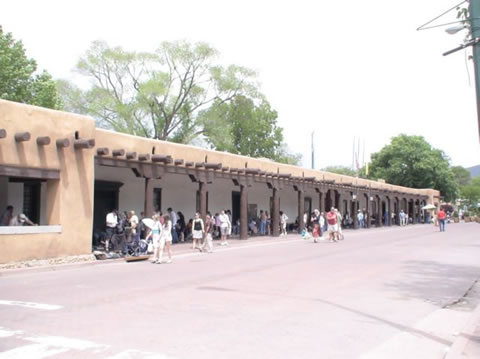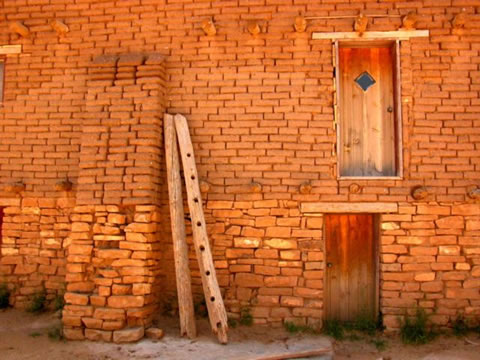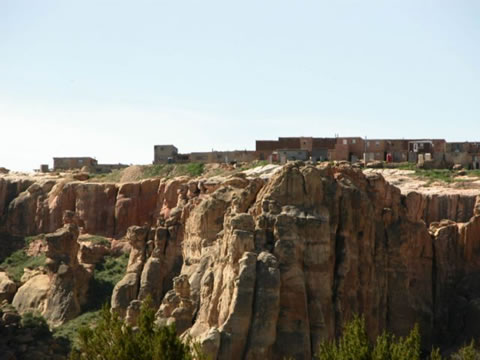1 state
5 days
1,500 miles
I had a great time in New Mexico last week. It has such a rich history and culture. I will not bother you with every detail of my trip. Below is the general architectural highlight. You can also find photographs with more information in ArkitecTrue Photo Gallery.
Nowhere else in the United States you are likely to see such extremes of architectural style as in New Mexico. The state’s distinctive architecture reflects the diversity of cultures that have left their imprint on the region. What is known today as the “Santa Fe style” of architecture actually goes back more than 1,600 years.
The first people in the area were the ancestral Puebloans, the Anasazi (a Navajo word meaning “ancient ones”), who built stone and mud homes at the bottom of canyons and inside caves (which look rather like condominiums to the modern urban eye). Built of stone or adobe on a decidedly human scale, the Indian settlements complimented nature by blending into the surrounding landscape. In this way, their architecture reflected not only their harmony with the earth but their reverence for the wholeness of life as well.
Pueblo-style adobe architecture evolved and became the basis for traditional New Mexican homes: sun-dried clay bricks mixed with grass for strength, mud-mortared, and covered with additional protective layers of mud. Roofs are supported by a network of vigas (long beams whose ends protrude through the outer facades) and latillas, smaller stripped branches layered between the vigas. Other adapted Pueblo architectural elements include plastered adobe-brick kiva fireplaces, bancos (adobe benches that protrude from walls), and nichos (small indentations within a wall in which religious icons are placed). These adobe homes are characterized by flat roofs and soft, rounded contours.
Santa Fe
Santa Fe Plaza is an excellent example of the convergence of early architectural styles. On the west side is a Territorial-style balcony, while the Palace of Governors is marked by Pueblo-style vigas and oversized Spanish/Moorish doors. Originally constructed in the early 17th century as Spain’s seat of government for what is today the American Southwest, the Palace of the Governors chronicles the history of Santa Fe, as well as New Mexico and the region. This adobe structure, now the state’s history museum, was designated a Registered National Historic Landmark in 1960 and an American Treasure in 1999.

Nearby, you’ll see the Romanesque architecture of the St. Francis Cathedral and Loretto chapel, brought by Archbishop Lamy from France, as well as the railroad station built in the Spanish Mission style, popular in the early part of the 20th century.
Since 1957, strict city building codes have required that all new structures within the circumference of the Paseo de Peralta conform to one of two revival styles: Pueblo or Territorial. The regulation also limits the height of the buildings and restricts the types of signs permitted. It also requires buildings to be topped by flat roofs. In 1988, additional citywide standards were established in an effort to impose some degree of architectural taste on new developments.
Taos Pueblo
Most notable architecturally in Taos is Taos Pueblo, the site of two structures emulated in homes and business buildings throughout the Southwest. Built to resemble Taos Mountain, which stands behind it, the two structures called Hlauuma (north house) and Hlaukwima (south house) are pyramidal in form, with the different levels reached by ladders. They are considered to be the oldest continuously inhabited communities in the USA.

The Pueblo is actually many individual homes, built side-by-side and in layers, with common walls but no connecting doorways. In earlier days there were no doors or windows and entry was gained only from the top. Doorways are typically low, and floors rise and fall at the whim of the earth beneath them. What’s nice about Taos is that you can see historic homes inside and out. You can wander through shops, and talk with natives.
Approximately 150 people live within the Pueblo full time. Other families owning homes in the North or South buildings live in summer homes near their fields, and in more modern homes outside the old walls but still within Pueblo land. There are over 1900 Taos Indians living on Taos Pueblo lands. The land base is 99,000 acres with an elevation of 7,200 feet at the village. No electricity or running water is allowed within the Pueblo walls due to their traditions.
Acoma Pueblo
Known as Sky City, Acoma Pueblo was strategically built on top of a 357-foot sandstone mesa many hundreds of years ago for effective defense against raiders. Spanish conquerors learned of this defensive stronghold when they entered New Mexico in the 1500s. Acomans claim that their 70-acre village is the oldest continuously inhabited city in the U.S.

You can only have guided tours. I had the great honor of meeting our guide, Orlando, who is one of the 50 Acomans living in the mesa year-round. The remaining residents live in nearby villages. Only on feast days do all the Acomans gather on the mesatop. There are around 3,000 Acoma villagers. Same as Taos Pueblo, there is no electricity or running water in the mesa.
Today, very few new homes are built of adobe. Instead, most are constructed with wood frames and plasterboard, and then stuccoed over. Several local architects are currently employing innovative architecture to create a Pueblo-style feel. They incorporate straw bales, pumice-crete, rammed earth, old tires, even aluminum cans in the construction of homes. Most of these elements are used in the same way bricks are used, stacked and layered, and then covered over with plaster and made to look like adobe. Often it’s difficult to distinguish homes built with these materials from those built with wood-frame construction. West of Taos, a number of “earthships” have been built. Many of these homes are constructed with alternative materials, most bermed into the sides of hills, utilizing the earth as insulation and the sun as an energy source.
